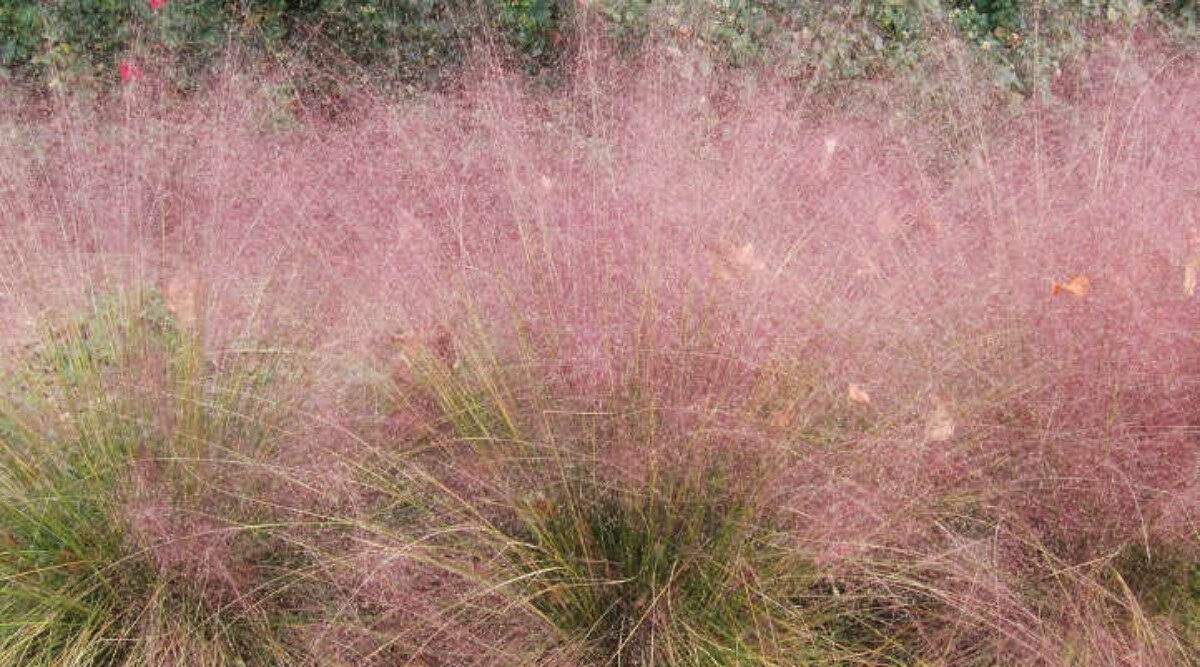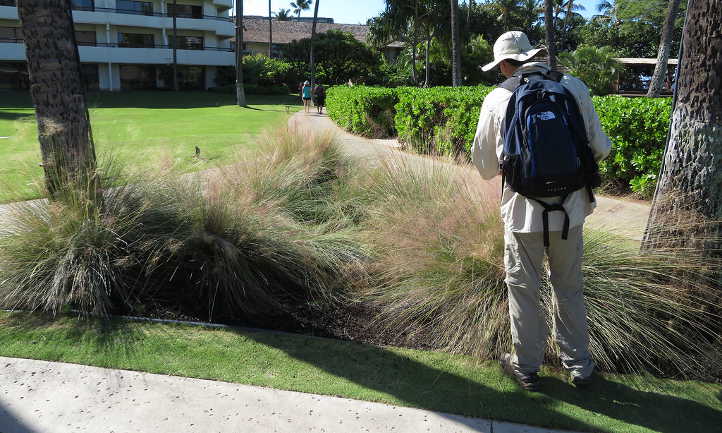Muhlenbergia Capillaris: Cotton Candy In The Garden
Pretty pink muhly grass, Muhlenbergia capillaris, is a lovely and large ornamental grass. Our guide teaches you to fill your yard with pink!

Contents
The pink plumes of color make Muhlenbergia capillaris a true garden gem. One of the most sought-after members of the ornamental grass world, it’s also called pink muhly grass.
Native to the United States, the tall flower stalks evoke the thought of cotton candy. Need a bit of deer resistant color? This will provide a lush pink glow in the fall.
So let’s explore the vibrant flora from this grass family in more detail. We’ll go over everything you’ll need to care for this striking perennial!
Good Products At Amazon For Your Cotton Candy Muhly:
Quick Care Guide

| Common Name(s) | Pink muhly grass, cotton candy grass, regal mist grass, pink hair |
| Scientific Name | Muhlenbergia capillaris |
| Family | Poaceae |
| Height & Spread | 3’x3′ |
| Light | Full sun to partial shade |
| Soil | Sandy or rocky, well-drained soil. Tolerant of poor soils |
| Water | Low to medium, drought-tolerant |
| Pests & Diseases | Aphids, tar spot, occasional rust |
All About Pink Muhly Grass

Normally inclined to sandy or rocky soil, this lovely North America native plant is prolific in its range. As a naturalized plant, it’s grown from coast to coast as an ornamental grass. It can be found in prairies, open woodlands, meadowlands and pine barrens.
Muhlenbergia capillaris grows in a mound with erect, finely textured, blue-green leaves. Around the fall, the outward projecting leaves turn breathtaking when they billow pink seed heads from a cotton candy crown. Delicate pink flowers grow on long, wiry and glossy leaves. They quickly form a vibrant pink cloud over the foliage. The seeds themselves are tiny and purplish in color.
Grown individually, this warm season grass looks stunning alone. But it makes an incredible show in a mass planting! If you’ve got a lot of property, you can have a glowing sea of pink. With an average size of 3’x3′, a few of them can have a real visual impact.
Drought tolerant and low maintenance, it’s often used on golf courses, highway medians and in xeriscaping. Place some of this lush native plant on steep hillsides and let it truly shine. Who needs the glasses to have a rose-tinted landscape, anyway?
Muhlenbergia Capillaris Care

Muhlenbergia capillaris is not only beautiful, it’s also quite hardy. Therefore, it makes for a perfect addition to a low-maintenance garden. But even low-maintenance gardens require a little love and attention!
Light & Temperature
Warm and dry conditions are perfect for your pink hair grass. It grows well in both full sun and partial shade in zones 5-9. It will die back in areas where the temperature drops below -10° F (-23° C) and not come back in the spring. In warmer climates, it’ll return with better weather.
Water & Humidity
For the first year, you’ll want to water this North American native regularly. Keep the soil damp, but not wet or muddy. Before watering, check to make sure it’s dried out in the top two inches of soil.
In subsequent years, water it once a week, but not more than 1″ a week. Let the soil fully dry out between watering sessions. During the winter, you may not have to water at all if there’s consistent rain. Remember, it handles drought well!
Soil
Your plants prefer sandy to rocky soil that is well-draining. While it does tolerate poor soil quality, it can’t take standing water.
Muhlenbergia readily accepts soil types from acidic to slightly alkaline. With such a wide range, it’s a pretty safe bet it’ll grow in most residential soils.
Fertilizer
Cotton candy muhly really doesn’t need a lot of fertilizer to survive. But if you want those clouds of lofty pink in the fall, use a slow-release fertilizer early in the spring. Avoid too much fertilizer, as too high of a nitrogen level creates spindly growth and weak stems. If your soil’s rich, you may not need to fertilize at all.
Propagation

Seed or division are the options for propagating muhlenbergia capillaris.
In the late fall when your plants start to lose their pink color, you can harvest seed. If you don’t mind pruning off the flower plumes, slide the plume into a paper bag and clip the stem. Let it dry in there for a few days, then shake the seeds off.
Every 3 years, your plant should be large enough to divide. Remove the plant from the ground and separate it into multiple clumps before replanting.
Pruning
Trimming is mostly for appearance purposes and should be done in the early summer or after the blooms have faded.
Sterilize your pruning shears in a mix of one part bleach to nine parts water. Trim off floppy stems or ones that are too tall. If you’re pruning once the flowers have faded, you can trim back the flower stalks as well.
Troubleshooting

You’ll find your muhlenbergia capillaris is surprisingly easy to care for!
Growing Problems
Over-watering can cause the conditions that enable fungal root rot diseases to form. Since your muhlenbergia capillaris is drought tolerant, it does better with too little water than too much.
Extreme cold conditions can cause the grass to die back. It’ll return in the spring unless there’s an extended period of temperatures below -10° F, at which point the roots will die off as well.
Pests
Your plants won’t experience many pest issues. Rarely, aphids may infiltrate the tall leaves, but those aren’t difficult to control in muhly gardens. A misting of neem oil should get rid of them.
Diseases
Two diseases can occur, but the only serious one is tar spot. This fungal disease can damage or kill your plants. To keep this out of your garden, ensure your plants are spaced to allow for adequate airflow. If you haven’t divided your plant for a few years, that can improve airflow as well.
An additional disease that happens, albeit rarely, is rust. Common rust appears as speckling on the blade-like leaves. Too much moisture or poor airflow is a common cause. Thin out dense clumps as you would for tar spot.
Frequently Asked Questions

Q: When to plant pink muhly grass seeds?
A: Pink muhly grass seeds are best planted in late winter to early spring, once the ground warms.
Q: How long does it take for pink muhly grass to grow fully?
A: This ornamental grass can take up to 3 years to grow to its maximum size. The plants have a moderate rate of growth, but they grow tall before they grow wider.







